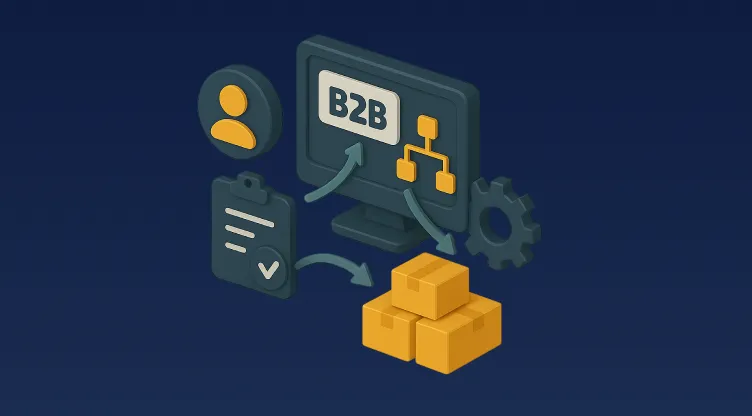Order Management Templates and Checklists: Improve Accuracy and Fulfilment

Table of Contents
Quick Dispatch: Your Essential Takeaways
- Practical order management templates improve accuracy and operational discipline in logistics.
- Checklists reduce delays and customer complaints by standardising how teams handle fulfilment.
- Tools such as OMS and WMS become more effective when paired with structured workflows.
- MENA businesses benefit greatly from process-driven fulfilment due to regional operational complexity.
- Templates can be adapted for cross-border eCommerce, COD handling, dark store models, and more.
- This guide includes steps to implement real-world order checklists aligned with supply chain software.
Building the Foundation of Reliable Fulfilment
As logistics and retail operations scale across the MENA region, the challenge isn’t merely increasing capacity—it’s ensuring accuracy and consistency as complexity grows.
From Saudi Arabia’s quick commerce boom to cross-border retail logistics in the UAE, businesses are under pressure to manage large volumes of orders without compromising on speed or quality. This is where structured order management templates and operational checklists prove invaluable.
They are more than internal tools. When implemented correctly, they reflect a company's commitment to efficiency, customer satisfaction, and scalability. Every skipped step, overlooked item, or incorrect dispatch can ripple across your entire supply chain, affecting both cost and credibility.
Order management templates provide a framework to structure operations, especially when integrated into omnichannel order management systems (OMS) and warehouse management software (WMS).
What Exactly Are Order Management Templates?
Order management templates are predefined guides or formats that ensure the correct handling of tasks involved in processing, picking, packing, and dispatching orders. These documents can exist physically as printouts or digitally within your order management system.
They may cover:
- Sales order verification
- Pick-pack sequences
- Fulfilment prioritisation based on delivery promise
- Exception handling and escalation steps
- Returns and refunds workflows
- Hub-specific routing conditions
Using these templates across your fulfilment cycle ensures that even in high-pressure environments, team members follow a structured process that reduces risks.
The Role of Templates in MENA’s Diverse Logistics Environment
Operating a logistics or retail business in the Middle East and North Africa (MENA) means dealing with unique operational dynamics:
- COD remains dominant in many countries.
- Multi-language teams handle fulfilment in mixed urban and rural environments.
- Last-mile logistics requires adaptability for hyperlocal and long-distance deliveries.
- Warehousing setups include dark stores, central fulfilment centres, and 3PL providers.
Each of these touchpoints can introduce errors if not managed consistently. Templates allow managers to ensure that no matter the location or team, the process remains predictable.
This is especially important in markets like Saudi Arabia and the UAE, where customer expectations are high, and logistics plays a vital role in brand perception.
Types of Templates That Improve Operational Consistency
Let’s explore key templates and how they contribute to smoother operations.
Order Verification Checklist
Used at the point of order creation or intake, this checklist ensures all vital details are captured before fulfilment begins.
| Task | Objective |
|---|---|
| Verify payment status | Prevents processing of unpaid orders |
| Confirm SKU availability | Avoids stockouts and double-selling |
| Check delivery address format | Ensures smooth geolocation and routing |
| Allocate correct fulfilment hub | Optimises last-mile logistics |
| Apply order classification tag | Helps in sorting express, standard, or bulk |
Pick and Pack Execution Guide
This template standardises the physical handling of goods, minimising risk and improving efficiency.
| Task | Objective |
|---|---|
| Print picking list | Source from OMS based on zone |
| Scan bin and SKU | Ensures the correct item is selected |
| Double-check batch numbers | Especially important for food and pharma |
| Consolidate at packing station | Organises items by order ID |
| Label correctly for carrier | Avoids last-mile errors |
| Mark order as ready for dispatch | Syncs with WMS or TMS |
Return Handling Workflow
Returns management can quickly become chaotic without structure. This checklist keeps the process organised:
| Task | Objective |
|---|---|
| Inspect returned item | Confirms condition and reason for return |
| Grade the product | Determines if resale, discard, or refurbish |
| Update inventory | Real-time sync with WMS |
| Trigger refund process | Integrated with payment or sales channel |
| Log in returns dashboard | Ensures traceability |
Integrating Templates into OMS and WMS Workflows
The real power of order templates is unlocked when they are implemented within digital platforms that automate, monitor, and scale their execution.
Omnichannel order management systems serve as the brain of your fulfilment network. They are designed to:
- Automatically classify orders based on business rules
- Route orders to appropriate hubs or warehouses
- Trigger alerts for stock discrepancies or backorders
- Enable partial or split fulfilments
- Maintain real-time visibility across all sales channels
When order management templates are layered into this system, you’re not relying on memory or verbal instructions—each task follows a predictable structure.
Similarly, warehouse management software takes these templates into execution mode. With WMS:
- Pickers follow digital picklists that map to bin locations.
- Packing stations follow defined sequences.
- Cycle counts are scheduled and documented.
- Mobile apps ensure inventory updates are done in real time.
By embedding your checklists and templates into the software logic, every employee—from the warehouse floor to the dispatch zone—can follow the same reliable protocol.
Practical Benefits for MENA Supply Chains
For MENA-based businesses, the use of templates within OMS and WMS software provides region-specific advantages.
Compliance and Accuracy
- Templates can ensure alignment with VAT or ZATCA invoicing standards in KSA.
- Label printing and invoice generation follow country-specific rules.
Speed and Scalability
- Orders can be grouped based on proximity zones in cities like Riyadh or Dubai, improving delivery speed.
- High-volume fulfilment can be handled without sacrificing order integrity.
Workforce Efficiency
- Multi-lingual staff can follow simplified, language-adaptable checklists.
- Shift handovers become seamless as everyone uses the same format.
Dark Stores and Quick Commerce
- Templates provide clarity for rapid pick-pack-dispatch within short timeframes.
- Helps brands promise and deliver within 2-3 hours where possible.
What Happens When You Don’t Use Templates?
Relying on manual processes or undocumented routines is risky. Here are some common consequences:
- Lost inventory: Items go missing due to incorrect bin locations or manual tracking.
- High return rates: Orders sent with wrong items or quantities.
- Wasted labour: Employees spend time resolving issues that could be prevented.
- Low customer retention: Errors create negative experiences that damage brand trust.
By contrast, companies that implement structured templates and embed them into their technology stack see gains in order accuracy, customer satisfaction, and operational throughput.
Getting Started: How to Implement Templates Effectively
You don’t need to overhaul your entire system overnight. Start by identifying the most error-prone areas in your order lifecycle.
Step-by-step launch plan:
- Audit common failure points in your fulfilment chain.
- Choose one or two workflows to document first.
- Design a simple checklist or SOP (standard operating procedure).
- Train your team on the new format using real orders.
- Implement within your OMS or WMS (manually or through automation).
- Review results weekly and refine the checklist as needed.
Over time, scale this approach to include express orders, bulk orders, cross-border shipments, and seasonal workflows.
Frequently Asked Questions
Are templates only useful for large enterprises?
No. Even small and medium-sized businesses benefit from structured processes. In fact, SMEs may gain more because they operate with leaner teams and fewer redundancies.
Can templates be customised for different countries?
Yes. You can create country-specific formats based on tax rules, shipping partners, or customer preferences.
How do I integrate templates into software?
Modern OMS and WMS platforms like Omniful allow users to upload workflows, automate triggers, and define business rules that align with template steps.
What’s the best format—paper or digital?
Digital is ideal for scalability and accuracy, especially when mobile apps are used on the warehouse floor. However, paper formats can work in early stages or where digital systems are not yet implemented.
Can templates improve last-mile delivery?
Yes. Proper routing, packaging, and carrier assignment workflows can significantly enhance last-mile success rates.
Conclusion: Process Discipline Is Your Competitive Advantage
In a region as dynamic and diverse as MENA, operational excellence depends not on how fast you move, but how predictably you can scale. Order management templates are tools that help businesses maintain structure amidst growing demand, omnichannel complexity, and increasing customer expectations.
They form the invisible backbone of fulfilment accuracy, customer trust, and financial efficiency. When powered by a modern OMS and WMS like Omniful, these templates shift from static documents to dynamic workflows that enable scalability, speed, and reliability.
To see how this process discipline can transform your business:
See Omniful in Action – Explore Omniful’s OMS & WMS solutions























